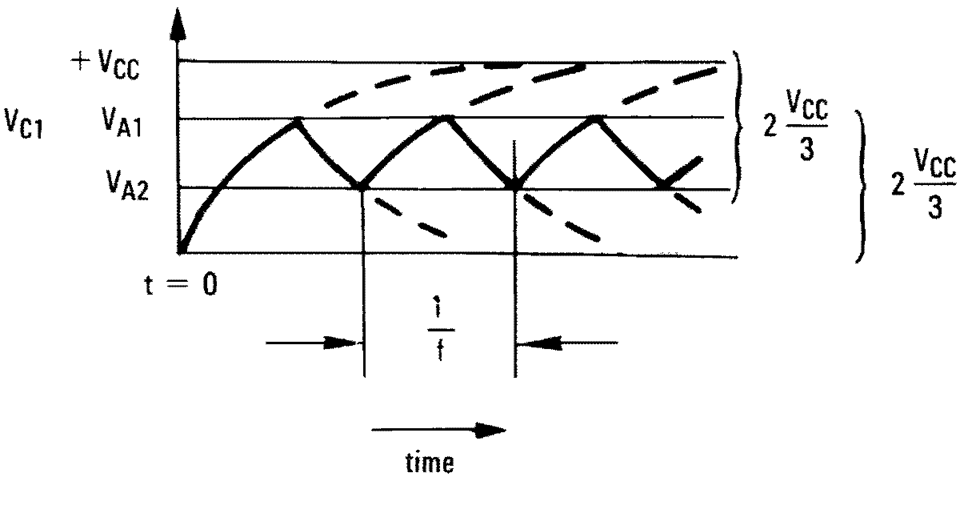SNOSDJ3 May 2024 TLV1812-EP
ADVANCE INFORMATION
- 1
- 1Features
- 2Applications
- 3Description
- Pin Configuration and Functions
- 4Specifications
- 5Detailed Description
-
6Application and Implementation
- 6.1 Application Information
- 6.2 Typical Applications
- 6.3 Power Supply Recommendations
- 6.4 Layout
- 7Device and Documentation Support
- 8Revision History
- 9Mechanical, Packaging, and Orderable Information
Package Options
Mechanical Data (Package|Pins)
- DDF|8
Thermal pad, mechanical data (Package|Pins)
Orderable Information
6.2.2.2 Detailed Design Procedure
The oscillation frequency is determined by the resistor and capacitor values. The following calculation provides details of the steps.
 Figure 6-10 Square-Wave Oscillator Timing Thresholds
Figure 6-10 Square-Wave Oscillator Timing ThresholdsFirst consider the output of Figure Figure 6-9 as high, which indicates the inverted input VC is lower than the noninverting input (VA). This causes the C1 to be charged through R4, and the voltage VC increases until it is equal to the noninverting input. The value of VA at the point is calculated by Equation 7.

if R1 = R2= R3, then VA1 = 2VCC/ 3
At this time the comparator output trips pulling down the output to the negative rail. The value of VAat this point is calculated by Equation 8.

if R1 = R2 = R3, then VA2 = VCC/3
The C1 now discharges though the R4, and the voltage VCC decreases until it reaches VA2. At this point, the output switches back to the starting state. The oscillation period equals to the time duration from for C1 from 2VCC/3 to VCC / 3 then back to 2VCC/3, which is given by R4C1 × ln 2 for each trip. Therefore, the total time duration is calculated as 2 R4C1 × ln 2.
The oscillation frequency can be obtained by Equation 9:
